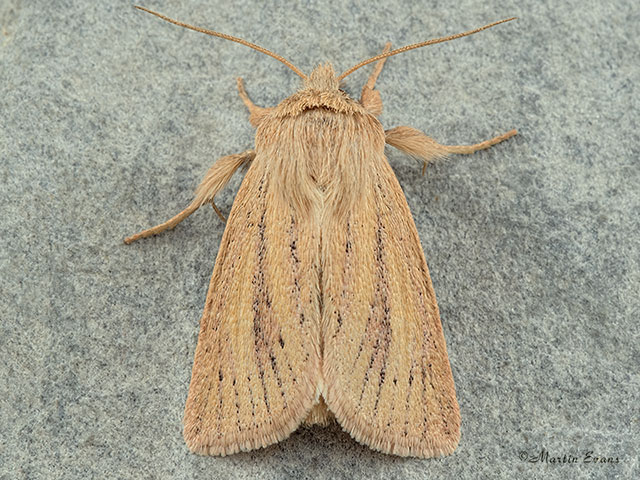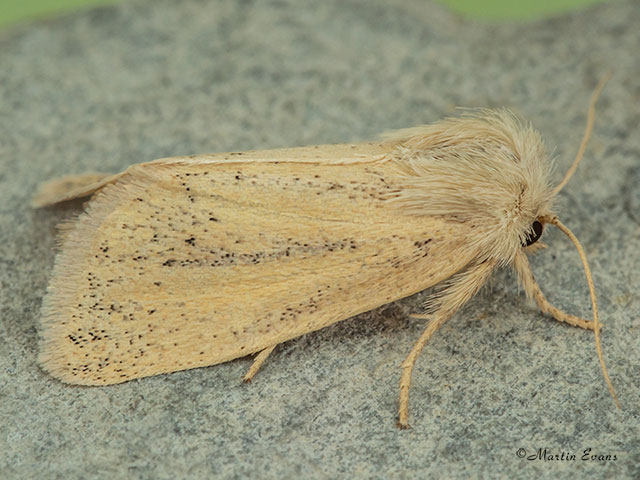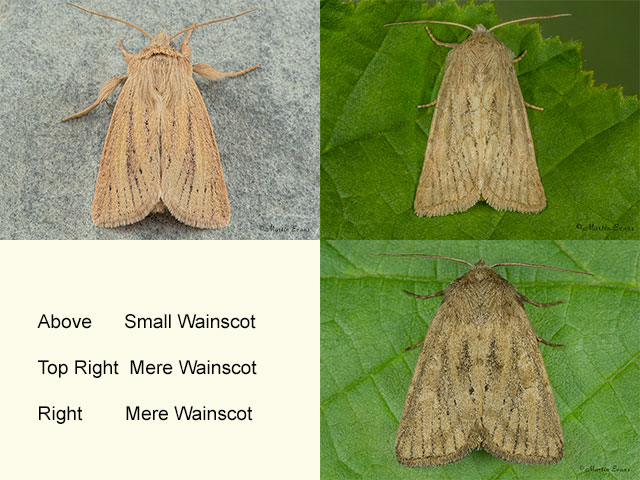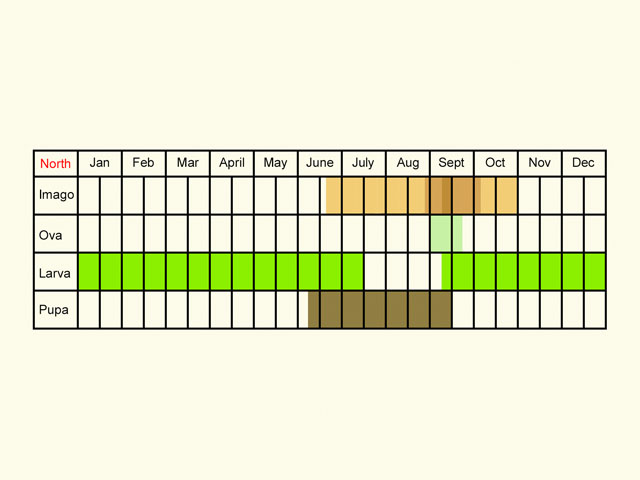Noctuidae
73.144 Small Wainscot Denticucullus pygmina (Haworth, 1809)
Common
Similar species: Small Rufous Coenobia rufa is a smaller (10 to 12mm), less robust looking moth with a comparitively shorter, broader forewing with an arched leading edge. Blair's Wainscot Sedina buettneri is on average larger (12 to 14mm) with a more angular, pointed forewing. Mere Wainscot Photedes fluxa is on average larger (12 to 15mm) with a broader wing. It has cross-lines (although they are often faint) and the kidney mark and oval are present although sometimes obscure. Concolorous Photedes extrema is of a similar size (11 to 13mm), but flies earlier in the year (peaks in late June, frequent until the end of the first week in July, occasional until early August). The forewing is paler and any streaking on the veins much less prominent. If unsure check the genitalia.
Forewing: 10 to 14mm
Habitats: Marshes, fens, damp woodland clearings and rides, boggy moorland, coastal dune slacks and along ditches.
Habits: The moth rests on the foodplant after dark. It flies at dusk and then again late at night when it comes to light.
Foodplant: The larva feeds inside the stems of Lesser Pond-sedge, Glaucous Sedge, Cypress Sedge, rushes, Reed Meadow-grass, Cottongrasses and possibly Flag Iris. It pupates in the leaf litter or in a hollow stem.









